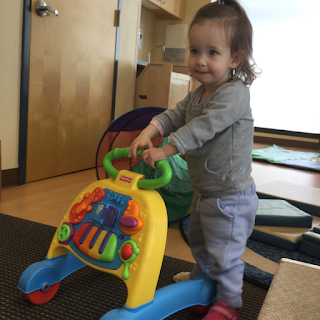Hello friends! Summer is officially here, which for Amelie means
lots of bubble time, swimming lessons, and helping Daddy work on his bench
press muscles!
Given my prowess in the bubble blowing arena, it was a toss up to decide whether to write this post about a return to bubbles program or bench press program.
Tails – bench press it is.
The bench press is a foundation exercise of any upper body routine
and it pains me to see the quivering lips of my patients when they tell me that
shoulder pain has forced them to break up with the bench press. Quiver no more!
The shoulder love doctor is here, and today, we win back the bench!
10,000 Foot
View:
Begin With Why
– It helps
to understand why you cannot bench press. Putting aside the fact that some
anatomic structure in the shoulder is probably pissed off (think rotator cuff,
AC joint, capsule, labrum) let’s look at this from a big picture standpoint. If
you are having trouble with the bench press it is most likely due to
limitations in mobility in the bottom of the bench press and muscular control
pressing out of the bottom of the movement. So come along with me, as we
highlight some exercises to improve mobility, muscular control, and some
strategies to reduce stress on the shoulders during the bench press.
Side note
– if you are interested in learning in greater detail about the anatomy and
treatment of the injured bench pressing shoulder, come check out our Movement
Systems of the Upper Extremity Course this Friday and Saturday!
On to the Return to Bench Press Progression:
Low Hanging
Fruit:
Step 1 – Mobility – Do you have the mobility required to complete the bench
press? Most people with bench pressing issues have trouble getting into the
bottom position, which requires large amounts of humeral extension and internal
rotation. Before trying to load up a barbell and work into this end range
extension and internal rotation position, start with this unloaded version of
the same position:
Use this exercise to improve your mobility/position for the bottom
of the bench press. This is a low irritability position because the shoulder is
“un-loaded” in this position and the scapulae (shoulder blades) are free to
move with the arms. Try performing 10
repetitions of 3-10 second holds.
Once you can successfully achieve this position, try it with a
barbell.
Step 2 – Muscular
Control through Mobility – Once you have established that you have the mobility to get
into the bottom of the bench press, it is time to restore muscular control of
the bench press motion.
1. Eccentric Push-ups are a great way to load the
bench press motion without adding a large external load (Side note - Check out
my blog post on Tempo Training to get the skinny on eccentrics). The beauty of
this movement is that you are building body weight strength/control, and
focusing on the eccentric contraction can lead to 10-40% greater force production
compared to concentric contractions1.
Try 10
repetitions with a 3-5 second eccentric and then build into your regular push-ups.
2. Isometric holds in the bottom position allow you to spend more time in the
position of limitation, while forcing the muscles of the shoulder complex to
actively stabilize the joint.
This plank hold can be performed as a body weight movement and
progressed to adding external weight.
Try 10 repetitions with a 3-10 second hold
Try 10 repetitions with a 3-10 second hold
3. Short
Arc of Motion with the rack press
can allow the lifter to continue training at similar volumes from their
pre-breakup program, while avoiding the painful bottom position of the press.
Limited range of motion training also has the benefit of improving strength
outside the range of performance, due to a strength overflow of about 15
degrees of motion on either end of the short arc of motion2,3.
**Note – weight plates have been removed from bar to improve
visibility of the movement. Subject in video is much stronger than he
appears!
Step 3 –
Reduce Shoulder Stress with the Bench Press – One of the challenges of the
bench press is that your shoulder blades get stuck between your rib cage and
the bench, reducing the freedom of motion that is required to maintain a stable
shoulder position throughout the duration of the lift4. This problem
becomes more evident as the weight on the barbell increases. I would like to
thank One Life Super Coach, Joe Helein, for this little pearl of wisdom:
Thanks for the shoulder saving tip, Joe! Sorry folks, he’s married. But he is free to help you set personal records!
Other considerations – change the bench angle and arm angle.
Consider implementing a decline press, which will alter the angle of shoulder
flexion and potentially reduce stress on the shoulder. You can also change your
grip width on the barbell, finding a comfortable position between shoulder width and 1.5 x
shoulder width.
The Real
World Application:
Just because you have shoulder pain does not mean that you and the
bench press need to start seeing other people, but rebuilding your relationship
will take time. You can make subtle modifications to your relationship, while
working on your weaknesses, and come back together as a stronger couple
(hopefully spicing up your relationship with some healthy pulling – see my Name
of the Game is Progress post)!
References:
1. George
Davies - A Master Clinicians Approach to Advanced Concepts in Examination
and Treatment of the Shoulder Complex – 2016
2. Clark, RA,
et al. The influence of variable ROM training on neuromuscular performance and
control of external loads. JSCR. 25:704-711, 2011.
3. Barak Y, et
al. J Electromyogr Kinesiol, 16:403-412, 2006 – from George Davies 2016 course
4. Kaselj, R. (2006). Exercise Rehabilitation of the Shoulder. Course
Manual.








